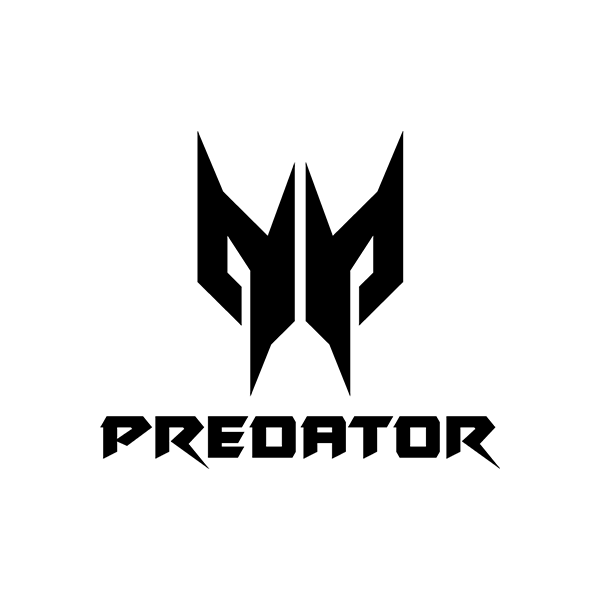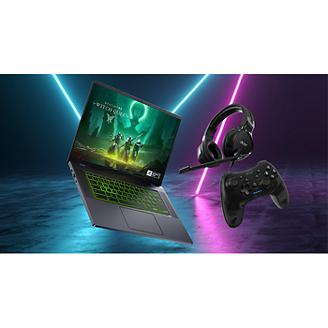-
Why Windows 11 is Better for Gaming Than Windows 10
With the end of support for Windows 10 just around the corner, gamers face a critical decision: stick with an aging operating system that’s slowly losing support or upgrade to Windows 11 and unlock the full potential of modern gaming. Is Windows 11 good for gaming? The answer is yes, and not just because of its modern interface. Windows 11 for gaming brings real, tangible improvements: faster load times, better graphics, deeper Xbox integration, and security features that keep your accounts safe. If you’re serious about performance, it’s time to upgrade to an OS built for the next generation of games.
1. Windows 10 end of support is more than just an expiration date
When people hear “end of support,” it’s easy to shrug it off and assume everything will keep working as usual. But for gamers, this is where the cracks start to show. On October 14, 2025, Microsoft will officially stop releasing free updates for Windows 10. No more security patches, no bug fixes, and no new features. If you want any updates after that, you’d have to pay for Microsoft’s Extended Security Updates (and even then, that’s really only for big corporate customers).
What does this mean if you’re still gaming on Windows 10?
* First, online gaming becomes a security risk. Without critical security updates, your system becomes vulnerable to malware and data theft, bad news when your payment details and valuable gaming accounts are just a few clicks away.
* Second, you’ll start running into compatibility walls. Anti-cheat tools, online multiplayer frameworks, and new game launchers are built with modern security features like Secure Boot and virtualization-based security in mind. These either don’t work well or aren’t available at all on Windows 10.
* And finally, gaming platforms like Steam and Epic have a history of phasing out older Windows versions. While they won’t drop Windows 10 support overnight, you’ll gradually lose access to new features and updates that improve game performance and stability.
2. Your hardware needs an OS that can keep up
Modern CPUs and GPUs are no longer just about raw power; they depend heavily on software optimization to unlock their full potential, and those optimizations are now largely reserved for Windows 11.
Graphics driver support for Windows 10 is already on borrowed time. While Nvidia and AMD haven’t officially announced an end date, history tells the story. After Windows 7 reached end of support, Nvidia stopped releasing new Game Ready drivers within a year. A similar timeline is expected for Windows 10, which means no new driver optimizations for upcoming game releases, no performance tuning, and likely no support for future GPU generations.
On the CPU side, Intel’s latest processors use a hybrid architecture with Performance and Efficiency cores, but only Windows 11’s Thread Director can properly manage these cores to optimize gaming performance and background multitasking. Windows 10 simply isn’t equipped to handle this new design.
Game developers are also moving forward, building their titles around technologies like DirectX 12 Ultimate, which fully supports advanced features such as ray tracing, mesh shaders, and variable rate shading, but only on Windows 11. When comparing Windows 10 vs Windows 11 gaming, it's clear that modern game engines are targeting the latter, especially for next-gen performance and visual fidelity.
If you want the best performance and visuals in future games, sticking with Windows 10 will hold you back. At this point, your operating system isn’t just a platform; it’s a critical part of your gaming performance equation.
3. Better security means safer gaming
It’s easy to focus purely on performance when talking about gaming, but security has become just as critical. Between account hijackings, ransomware, and payment fraud, ignoring OS-level security features is a real gamble.
* TPM 2.0 and Secure Boot Are Mandatory for a Reason: Windows 11 enforces these modern security standards. They help protect your stored passwords, credit card information, and even your saved games from being compromised by malware and exploits.
* Next-Gen Anti-Cheat Systems Rely on Modern OS Features: Competitive titles like Valorant and Call of Duty: Warzone use kernel-level anti-cheat systems that work best, or exclusively, with Windows 11’s advanced security layers. Without these protections, cheaters have an easier time exploiting games, and you’re more likely to find toxic, cheat-infested lobbies on outdated platforms.
* Your Gaming Accounts Are Worth Real Money: Steam, Battle.net, Xbox Live, these accounts often have hundreds or even thousands of dollars’ worth of games tied to them. Do you really want to risk that on an OS that’s no longer protected?
Security isn’t exciting to talk about, but it’s something every gamer needs to take seriously, especially in a world where digital assets and microtransactions are becoming more valuable by the day.
4. Windows 11 comes packed with actual, game-changing features
Windows 11 isn’t just about catching up with modern gaming; it completely transforms the experience. With technologies like DirectStorage, load times are significantly reduced by allowing your NVMe SSD to send data directly to the GPU, avoiding the CPU bottlenecks that have slowed down games for years. Open-world environments load faster, and assets stream more smoothly, eliminating distracting texture pop-ins.
Windows 11 also introduces Auto HDR, which enhances older DirectX 11 and 12 games with high dynamic range lighting. If you have a compatible monitor, your existing game library will instantly look more vibrant and visually dynamic without needing patches or mods.
Even Game Mode has been reworked to properly prioritize system resources for gaming and minimize background interruptions. With better memory management and smarter CPU core scheduling, Windows 11 delivers smoother performance and a more immersive gaming experience overall. If you want to go further, you can even optimize Windows 11 for gaming using advanced system tweaks, driver updates, and by enabling features like Auto HDR and DirectStorage.
5. Xbox Game Pass and the Microsoft gaming ecosystem are seamlessly integrated
If you haven’t explored Game Pass yet, you’re missing out. And if you’re still using Windows 10, you’re not even getting the best version of what it has to offer.
* The Xbox app on Windows 11 is faster, more reliable, and makes finding, installing, and launching games effortless. Whether you’re a casual player or a hardcore completionist, it simplifies everything about managing your library.
* With Game Pass for PC, you unlock access to a rotating library of hundreds of titles, including day-one releases for big-name games. And if you subscribe to Game Pass Ultimate, you can even stream games directly through Xbox Cloud Gaming, perfect for trying out titles before committing valuable storage space.
* The Xbox Game Bar has also matured into a truly useful in-game overlay. Access performance metrics, take screenshots, control Spotify playlists, and even join Xbox voice chats without ever leaving your game.
This level of integration turns your PC into a true gaming hub, something Windows 10 just doesn’t handle as smoothly.
Don’t just upgrade your OS, upgrade your entire experience
With Windows 10 entering its final chapter, it’s not just time to upgrade your software, it’s time to rethink your entire gaming setup. Clinging to outdated hardware and an unsupported OS means missing out on faster load times, smoother gameplay, richer visuals, and a safer, more secure experience online.
If your current PC doesn’t meet the requirements for Windows 11, or if you’re ready to experience what modern gaming really feels like, this is the perfect time to invest in a new machine that’s built for the future.
Acer’s latest lineup of Predator and Nitro gaming PCs and laptops comes fully equipped with Windows 11 and the latest hardware designed to take full advantage of everything we’ve discussed. Additionally, with the purchase of specific Acer gaming products you can get a 3 month free subscription to PC Game Pass.
From cutting-edge graphics cards and advanced cooling solutions to high-refresh-rate displays and modern security features, these systems aren’t just ready for the next generation of games, they’re built for it.
-
Top Ten Most Overpowered Pictos in Clair Obscure: Expedition 33
In Clair Obscur: Expedition 33, mastering Pictos and their corresponding Luminas can turn a standard playthrough into an overpowered spectacle. Pictos, which are rare accessories found in Paint Cages, looted from foes or earned through NPC quests, grant each character up to three passive bonuses. Luminas unlock those effects permanently after four victorious battles. Balancing these slots against your weapon’s scaling attributes is key, but some Pictos so radically shift combat that they break the game’s intended challenge. In this article, we dive into the ten most overpowered Pictos, those game-bending powerhouses you will want to hunt down first, slot immediately and build your entire endgame around.
1. Cheater - Lumia Cost 40
Cheater gives your character two consecutive turns, effectively doubling action economy. By acting twice in a row, you can unleash potent combos, build Gradient Charges rapidly, and trigger powerful synergies before enemies react. This dramatic boost in tempo pairs exceptionally well with Pictos like Charging Critical or Energizing Attack, reinforcing resource generation. Against tough opponents or bosses, the extra turn can break stalemates and secure crucial crowd-control opportunities.
2. Energy Master - Lumia Cost 40
Energy Master increases every AP gain by one additional point, supercharging your ability economy throughout each battle. Whether deriving AP from parries, Gradient Charges, or Pictos like Dead Energy, Energy Master amplifies every source, accelerating skill usage. This consistent AP bump allows you to chain high-cost abilities more frequently, sustain combos with Pictos such as Energizing Start or Parry, and maintain momentum against waves of enemies and bosses.
3. Second Chance - Lumia Cost 40
Second Chance revives your character with full health once per battle, offering a guaranteed do-over at critical moments. Upon receiving fatal damage, the Picto instantly restores you to peak condition, preventing defeat and maintaining party continuity. This safety net is invaluable against surprise one-shot attacks, lethal combos, or execution skills that bypass shields and parries. By securing one free revival, Second Chance reduces pressure on healing resources and allows you to push offensive builds without fearing permanent loss.
4. Clea's Life - Lumia Cost 30
Clea’s Life fully heals your character at the start of a turn if you haven’t taken damage since your last action, granting a powerful reset for cautious playstyles. This Picto rewards defensive tactics, offering complete health recovery without consuming items or turns. It’s especially potent during boss fights or multi-stage encounters, giving you a second wind after successful dodges or parries.
5. Effective Heal - Lumia Cost 30
Effective Heal doubles the amount of health restored by any healing source, significantly amplifying tints, items, and healing skills. With this Picto active, every cure becomes a major swing in your favor, enabling mid-combat recovery that rivals late-game regeneration effects. This boosted restoration lets you allocate fewer Lumina points to healing Luminas, freeing resources for offense or utility.
6. Base Shield - Lumia Cost 20
Base Shield grants one Shield at the start of your turn if you currently have no shields, offering automatic damage mitigation each round. This constant Shield generation can nullify powerful enemy attacks or absorb stray hits, protecting you through unpredictable enemy patterns. Over successive turns, even a single Shield can blunt critical blows, turn one-hit-KO scenarios into survivable skirmishes, and preserve your offensive momentum.
7. Survivor - Lumia Cost 20
Survivor allows your character to survive any fatal blow with one health point once per battle, effectively giving you a second chance under dire circumstances. By preventing outright deaths, this Picto preserves party resources and carries you through lethal ambushes or execution skills that bypass shields. Survivor pairs exceptionally well with aggressive builds and glass-cannon strategies, letting you gamble on high damage output without permanent loss.
8. In Media Res - Lumia Cost 15
In Media Res grants three Shields at the start of combat but reduces your maximum health by half, turning each battle’s opening into a strategic advantage. Those instant Shields absorb enemy opening barrages, letting you counterattack or reposition safely, even against faster foes. Despite the health penalty, the buffer more than compensates in boss fights or ambushes. It shines when paired with “SOS” Luminas—SOS Power, SOS Rush, or SOS Shell—which trigger Powerful, Rush, or Shell respectively once you drop to 50% health, giving you both turn-one resilience and powerful mid-fight comeback potential.
9. Solidifying - Lumia Cost 10
Solidifying grants two Shields once per battle when your character’s health falls below 50%, providing a clutch defensive boost in critical moments. When you dip into danger, this Picto automatically shields you against subsequent attacks, stabilizing your footing during boss mechanics or unexpected damage spikes. These Shields can turn the tide, buying time for healing, counterattacks, or repositioning.
10. Painted Power - Lumia Cost 5
Painted Power removes the 9,999-damage cap, allowing your attacks and skills to exceed that limit. This unlocks the full potential of high-damage combos, burst skills, and stat-stacking builds, especially when paired with gradient charges or critical multipliers. Ideal for late-game content, Painted Power ensures that every point of damage and bonus matters. You obtain this after beating The Paintress, and having it equipped as a Lumina is a must for every character in your party, or else you won’t be able to fight effectively in Act 3.
Whether you crave extra turns, limitless damage or clutch defensive tools, these ten Pictos will upend the challenge curve and redefine what your party can achieve. Hunt them down early, slot them with intention and build every encounter around their game-bending potential. Gear up for every challenge with Acer’s Predator and Nitro lines. Predator pairs top-tier hardware with efficient thermal management to keep you running at peak performance, while Nitro delivers solid power, vibrant displays and upgrade flexibility all at a wallet-friendly price. Visit Acer’s website to explore each series and build the system that fits your needs.
-
Best End Game Weapons for Each Character in Clair Obscur: Expedition 33
Clair Obscur: Expedition 33 is one of the most impressive Western RPGs to release this year—especially considering it comes from a small indie team. With its unique combat mechanics, deep worldbuilding, and polished presentation, the game has set a new bar for what independent studios can achieve. As you push toward the endgame, having the right weapons for each character becomes critical. This guide breaks down the best endgame weapons for every party member, highlighting which options offer the strongest performance and why.
Gustave
1. Lanceram
Lanceram stands out as the best weapon for Gustave due to its strong stats and early-game availability. While Gustave’s time in the party is limited, since he exits the story after Act 1, Lanceram offers excellent value during the period you have him. The weapon boasts solid base power and is especially valuable later when Verso joins, as he can make full use of its passive effects. Notably, it prevents Verso from dropping below Rank C and grants extra Perfection on successful parries, making it ideal for maintaining consistent damage output and climbing to higher Ranks efficiently.
Lune
1. Choralim
Choralim is Lune’s best weapon, acquired after defeating the Chromatic Lzando at Siren’s Dress. It scales with defense and agility, letting Lune stay fast and resilient. The true power of Choralim lies in its level 4 ability, granting 100% crit chance once Lune has four active stains, something easily achieved within two turns. This opens up massive synergies, allowing you to ignore crit stats on gear entirely and focus purely on survivability. Additionally, its level 20 effect applies Burn on every crit, enabling Lune to spread devastating damage-over-time effects to all enemies effortlessly.
2. Benisim
Benisim is Lune’s go-to weapon for a dedicated healing-support build, offering both efficiency and strong utility scaling. It deals Earth damage and scales with vitality and defense, reinforcing her natural role as a durable support. At level 4, all healing skills cost 1 less AP, significantly boosting her sustain potential across longer fights. At level 10, Benisim begins generating one Earth Stain at the start of each turn, fueling stain-based healing abilities without needing to build them manually. Its most powerful effect comes at level 20: consuming stains with a healing skill instantly grants Lune an extra turn. This opens the door to powerful back-to-back support sequences, whether it’s chain healing, status recovery, or setting up allies for burst damage. Benisim rewards smart turn planning and becomes a cornerstone weapon for stain-centric support strategies.
Maelle
1. Melarum
Melarum is a balanced, stance-driven weapon for Maelle that scales with vitality and luck, making it ideal for players who want to blend defense, utility, and moderate offense. At level 4, switching to Virtuose Stance heals all allies for 20% of their max health, making it a consistent party-wide sustain tool. The level 10 ability further enhances survivability by automatically applying Shell when Maelle is above 80% HP, offering a passive defensive buffer. Finally, at level 20, Melarum ensures Maelle enters Virtuose Stance automatically when her health drops below 50%, enabling clutch heals and shielding in dangerous situations. With its synergy around frequent stance switching, Melarum turns Maelle into a reliable frontline support who can sustain the party while remaining hard to kill herself.
2. Jarum
Obtained after defeating the Chromatic Jar boss on a southwest island, Jarum is a powerful weapon for Maelle centered around counterattacks. It scales with defense and luck, making it a strong choice for both survivability and critical strikes. Its level 4 effect grants Virtuoso Stance on counterattacks, enabling frequent stance shifts without expending AP. At level 10, it applies five stacks of Burn on counterattacks, and at level 20, it further increases counter damage based on the number of shields. This makes it a highly synergistic weapon for defensive and reactive playstyles.
3. Yeverum
Yeverum is one of Maelle’s most powerful and support-oriented weapons, scaling with defense and agility for both tankiness and turn economy. At level 4, applying Shell also grants 1 Shield, making her standard buffs even more potent. Once upgraded to level 10, applying Shields gives 1 AP. whether to herself or an ally, creating an AP-positive feedback loop that fuels continuous support actions. At level 20, Yeverum's power spikes dramatically: switching to Virtuose Stance instantly doubles all Shields on allies, rapidly pushing the team to the 9-shield cap if properly set up. When combined with the right Luminas, Yeverum allows Maelle to open fights by shielding the entire party and becoming nearly untouchable. It's an exceptional pick for defensive-heavy team comps or shield-based strategies that aim to nullify incoming damage entirely.
Sciel
1. Direton
Direton is Sciel’s most overpowered weapon and can be acquired relatively early from the Falling Leaves merchant. What makes Direton exceptional isn’t just its solid damage output, it scales with both defense and agility, enhancing survivability and granting faster turns. Its standout feature is the level 4 ability, which generates 1 AP per moon charge at the start of each turn. This allows Sciel to spam high-cost abilities like Dark Wave and Grim Harvest back-to-back, turning her into both a high-damage dealer and one of the best support healers in the game.
2. Ramasson
Acquired after defeating a Troubador enemy group in the Forgotten Battlefield, Ramasson is a stylish and functional weapon for Sciel. It features support capabilities, enhancing her ability to heal and shield allies while still dishing out respectable damage. At level 4, it allows Sciel to consume 1 Moon charge at the start of her turn to heal all allies for 20% of their max HP, making it an excellent choice for sustained group healing. Once it reaches level 10, basic attacks begin generating Moon charges, which fuels this healing loop without needing to rely solely on abilities. At level 20, Ramasson becomes even more efficient, with Moon-based skills granting an extra charge, accelerating Sciel's support cycle. Ideal for builds that revolve around Sun and Moon charge management, this weapon transforms Sciel into a reliable, self-sustaining team healer who can still contribute with solid damage and status support.
Verso
1. Dualiso
Dualiso is a great choice for Verso, obtained after defeating the Duelist in the Forgotten Battlefield. This weapon’s level 4 ability lets Verso immediately take a second turn after using a basic attack, creating an endless feedback loop of AP generation and buffs. Combined with Luminas and Pictos that boost base attack effects, Verso can stack Perfection, apply debuffs like Defenseless and Powerless, and even heal himself, all in a single round. With smart setup, Verso never runs out of AP and becomes a relentless damage and utility machine.
2. Chevalam
Chevalam is a late-game weapon for Verso designed around aggressive, no-mistakes combat. It scales with agility and luck, enhancing both crit rate and speed. At level 4, it starts Verso at Rank S but disables all healing and shield gains, pushing you to play flawlessly from the start. At level 10, the weapon grants a 20% damage bonus for each consecutive turn without taking damage, stacking up to 5 times for a massive 100% boost. Finally, at level 20, it automatically applies Rush while at Rank S, giving Verso additional utility and action flexibility. Found in the Crimson Forest after defeating the Chromatic Gold Chevaliere, Chevalam is a weapon for players who want to push Verso’s offensive ceiling as high as possible, so long as they can stay untouched.
3. Simoso
Simoso is arguably Verso’s strongest weapon, designed for high-risk, high-reward play and unlocked only after defeating the notoriously difficult Simon in The Abyss. It scales with vitality and agility, making it deadly and fast. At level 4, Simoso converts all skill damage into Light damage, giving it a unique elemental profile. At level 10, Light-based attacks gain a 20% chance to apply Burn, adding strong damage-over-time potential. The real game-changer comes at level 20, Verso becomes unkillable while at Rank A or higher. This single condition makes Simoso absurdly powerful in skilled hands, allowing for reckless aggression without the usual consequences. If you can beat Simon, this weapon turns Verso into a relentless, unkillable burst machine that can carry entire fights on his own.
Monoco
1. Joyaro
Joyaro, found in the Flying Manor or Endless Night Sanctuary, is Monoco’s best weapon by far. It starts battles in the Almighty Mask form, immediately unlocking Monoco’s most powerful abilities. This weapon heavily focuses on raw damage, stacking up to 100% bonus damage by the fifth turn if Monoco avoids taking hits. Its level 20 ability doubles break damage while in the Almighty Mask, letting Monoco shred enemy defenses and quickly set up big combo attacks. Though it lacks utility, Joyaro is perfect for players who want to maximize Monoco’s burst potential from turn one.
2. Sidaro
Sidaro is a dark-element weapon for Monoco that rewards precision and skill-based execution. It scales with Might and Luck and is built around mastering the Bestial Wheel system. At level 4, each time Monoco uses an Upgraded Skill that matches the current wheel value, he gains a 30% damage boost, stacking with no cap. However, using the wrong skill instantly resets the bonus. Level 10 adds unpredictability, basic attacks now spin the Bestial Wheel to a random value, introducing both opportunities and risks. At level 20, successful use of an Upgraded Skill also grants 1 AP to all other allies, giving Sidaro strong team utility if you can maintain rhythm. While its base power is lower than other late-game weapons, Sidaro pays off massively in long fights with tight AP management and smart wheel tracking. It’s a weapon for players who enjoy high technical ceilings and team-based synergy.
-
Best Tank Games to Play in 2025
Tank simulator games put you in control of heavy armor on the battlefield. Some games focus on real-world history, while others take a modern or even futuristic approach. Whether you enjoy slow, tactical combat or fast-paced action, there’s a tank sim for you. In 2025, many of the top titles are still popular and supported. This list looks at the best tank simulator games you can play this year.
1. Gunner, HEAT, PC!
Gunner, HEAT, PC! is a modern tank simulator that blends realism with fast, accessible gameplay. Developed by Radian Simulations and first released in Early Access in 2022, the game has steadily evolved into one of the most promising entries in the genre. It was created by a team of tank enthusiasts aiming to fill the gap between ultra-realistic simulators like Steel Beasts and more arcade-style titles such as War Thunder.
The focus here is on short, intense armored engagements. With over 50 missions ranging from recon to assault to defense, GHPC offers immediate action without excessive setup. Each tank behaves differently, and the game’s detailed damage system simulates internal destruction, spalling, and crew injuries with impressive depth. Sighting systems are modeled individually, adding variety to each vehicle’s playstyle. The audio design, from crew chatter to cannon fire, heightens immersion in every firefight.
While the core gameplay is solid, there are areas that need work. The campaign mode lacks depth, mission maps feel repetitive, and the AI can be unreliable in complex environments. However, a robust roadmap promises significant improvements, ranging from multiplayer and destructible environments to infantry integration and new factions.
For players looking to experience modern tank warfare with a focus on tactical combat and mechanical depth, Gunner, HEAT, PC! stands out as one of the best tank sims you can play in 2025.
2. Steel Armor: Blaze of War
Steel Armor: Blaze of War is a detailed tank simulator developed by Graviteam and released in 2011. Despite its age, it remains one of the most complex and rewarding tank sims available to play in 2025.
The game blends two layers of gameplay. On the strategic map, you move platoons, manage supplies, and plan operations. When units engage, the game transitions into real-time 3D battles where you take direct control of tanks like the T-62 or M60A1. You can play as the commander, driver, loader, or gunner while also issuing commands to infantry and support units through a basic RTS-style interface.
The damage model is highly realistic, with detailed ballistic effects that reflect where each shell hit and how it impacted the vehicle. The battles are challenging, and decisions made during combat affect your broader campaign. The setting focuses on overlooked Cold War conflicts such as Angola, Iran-Iraq, and Afghanistan, offering a change from the usual World War II scenarios.
While the interface is clunky and the learning curve is steep, patient players will find a sim that rewards tactical thinking and offers a level of depth few others match.
3. War Thunder
War Thunder is a long-running combined arms MMO developed by Gaijin Entertainment, first released in 2012. Though it began as an air combat sim, it has since grown into one of the most popular tank games available today, and in 2025 it remains a staple for players who want a mix of realism, variety, and competitive play.
The game features a vast roster of ground vehicles from World War II through the modern era. You can take control of light tanks, heavy armor, self-propelled guns, and anti-air units from countries around the world. The damage model is location-based, with shell penetration, crew injuries, and module destruction all playing a role in each engagement. This makes positioning and shot placement just as important as raw firepower.
War Thunder offers multiple game modes, including arcade, realistic, and simulator battles, each with its own physics and spotting systems. The simulator mode offers a more authentic tank experience, but even the realistic battles deliver plenty of tension and tactical depth. However, the game’s free-to-play structure is often criticized for its grind-heavy progression and monetization mechanics.
For players looking for accessible tank combat with depth and frequent updates, War Thunder is still one of the most active and engaging options on the market.
4. World of Tanks
World of Tanks is a fast-paced, team-based tank shooter developed by Wargaming and released in 2010. While not a simulator in the traditional sense, it remains one of the most played armored combat games in the world, offering a polished and accessible experience that still draws millions of players in 2025.
Gameplay centers around 15v15 multiplayer battles using mid-20th century tanks from nations like the USA, USSR, Germany, and more. Each tank falls into one of five classes—light, medium, heavy, tank destroyer, or self-propelled gun—each with distinct roles and mechanics. The focus is on positioning, map knowledge, and coordination rather than detailed simulation. While there are no crew roles to manage or complex systems like sight modeling, the armor and damage mechanics are more nuanced than they appear at first glance, with angle-based penetration, module damage, and critical hits playing a key role in fights.
The game is free-to-play with optional premium upgrades, though its monetization and grind can be frustrating for newcomers. That said, it offers one of the smoothest and most action-focused entries into tank gaming.
5. Tank Crew: Clash at Prokhorovka
Tank Crew: Clash at Prokhorovka is a World War II tank simulator developed by 1C Game Studios in collaboration with Digital Forms. Released as part of the IL-2 Sturmovik: Great Battles series, it takes the engine of a well-established flight sim and adapts it into a fully realized ground warfare experience. Despite its origin as a flight sim platform, the transition to tanks is surprisingly successful, offering deep realism, detailed modeling, and large-scale battles.
The game features ten historically accurate tanks from the Battle of Kursk, including the T-34-76, Tiger I, Panther, and Sherman. Interiors are meticulously modeled down to each gauge and crank, with damage systems that reflect real-world vulnerabilities. Crew roles matter, losing a loader slows down your fire rate, and as commander, you can issue orders to your platoon across both single and multiplayer missions. Every tank feels different, with noticeable variations in optics, handling, and ballistic performance.
Tank Crew includes scripted campaigns, standalone missions, and full multiplayer integration with IL-2 maps, complete with air support and dynamic frontlines. Though the visuals are slightly behind more modern games, the scale and authenticity of combat make it one of the most immersive WWII tank sims available in 2025.
6. Multi Turret Academy
Multi Turret Academy is a quirky top-down tank action game developed by indie studio Scarlet Academy and released in Early Access on January 18, 2024. It combines roguelike gameplay, arcade-style shooting, and an unapologetically anime-inspired aesthetic, offering a light-hearted twist on the World War II tank genre. While most tank games lean serious or simulation-heavy, this one trades realism for charm, featuring Soviet catgirls, pineapple-based currency, and an irreverent tone that recalls Command & Conquer: Red Alert at its silliest.
Players command a wide range of historical Axis and Allied tanks (92 in total) including rarely seen multi-turret variants. Missions are short and varied, with objectives ranging from full-on assaults to stealth-based survival. After each run, players choose from a set of upgrades, such as new tank parts or crew members with unique skills. The game also includes customization, re-roll mechanics, and accessible keyboard and mouse controls that still deliver a satisfying sense of vehicle weight.
Though still in development, Multi Turret Academy has received “Very Positive” reviews on Steam. With a growing player base and an active roadmap promising more tanks, maps, and bosses, it’s one of the most offbeat yet promising tank games to keep an eye on.
7. Pocket Tanks
Pocket Tanks is a classic artillery game developed by Michael P. Welch that first launched in 2001 and continues to entertain over two decades later. Still available on PC, Mac, and mobile platforms in both free and deluxe versions, the game embraces chaos and comedy over balance and competition. In a time when most multiplayer games lean into optimization and skill ceilings, Pocket Tanks stands out by making fun the true objective.
The gameplay is simple: two players take turns launching weapons at each other across a destructible 2D landscape. You control shot angle and power, and your tank can move slightly. Instead of eliminating your opponent outright, each round ends after ten turns, and the player with the highest score wins. What truly defines Pocket Tanks, however, is its absurd arsenal. With over 400 weapons, ranging from Sniper Cannons and Magic Beans to Tunnel Bores and Flea Circuses, most are unbalanced, unpredictable, and intentionally ridiculous.
That imbalance is part of the magic. The weapons' strange effects and cartoonish chaos create laugh-out-loud moments, especially when played locally with friends. Whether you're burying someone in dirt or accidentally nuking yourself, Pocket Tanks remains one of the most joyfully unserious tank games you can still play in 2025.
-
Top Bus Simulator Games to Play in 2025
Bus driving games let you see what it’s like to control a big bus in different places. You can follow the rules, pick up passengers, and stay on time, or drive a little wild and see what happens. Some games let you speed, run red lights, or take risky turns. Others focus more on safe and smooth driving. No matter how you play, these are the best bus simulator games to check out in 2025.
1. OMSI 2: Steam Edition
OMSI 2: Steam Edition, developed by MR Software and released on December 12, 2013, is a deeply realistic bus driving simulator that focuses on technical accuracy and immersive detail. Set in 1980s Berlin, it features historic routes, complex bus mechanics, and hands-on controls like ticketing, gear shifting, and door operation. While the graphics feel outdated and the game can suffer from performance issues, its strong modding community and authentic driving experience make it a favorite among sim purists. If you’re looking for a true-to-life bus sim with a steep learning curve and endless customization, OMSI 2 is worth checking out.
2. Bus Simulator 21 Next Stop
Bus Simulator 21: Next Stop, developed by stillalive studios and released on September 7, 2021, is a feature-rich driving sim that blends structured route management with open-world freedom. Set across two expansive maps—Angel Shores (USA) and Seaside Valley (Europe)—the game offers a fleet of 30 officially licensed buses, including electric, articulated, and double-decker models. The "Next Stop" update adds a career mode that merges sandbox play with progression-based objectives. Players can stick to realistic driving or embrace the chaos by ramming traffic, skipping stops, or fining passengers mid-route. While the game can suffer from spotty AI and some clunky interface moments, its flexibility, quirky mechanics, and oddly satisfying ticket-checking system make it a surprisingly addictive experience for both casual and hardcore sim fans.
3. City Bus Manager
City Bus Manager, developed by PeDePe and released in Early Access on November 10, 2022, is a bus tycoon game that lets you build and manage your own public transport company, and the standout feature is that you can do it in any city in the world. Thanks to integration with OpenStreetMap, you can plan bus routes through real-world locations, whether it’s your hometown or a famous city abroad. That feature alone adds a layer of personal engagement rarely seen in the genre.
At its core, the game is about building a bus depot, hiring staff, buying buses, and expanding routes. You’ll need to maintain your fleet, manage ticket prices, keep customers happy, and optimize operations to stay profitable. Your success depends on things like bus cleanliness, driver behavior, reliability, and punctuality. You can even train staff and unlock better tech through a research tree. While the depth isn’t groundbreaking, it’s solid enough to stay engaging.
Visually, the game is functional but basic. The graphics are simple, the map looks like a board game, and the sound design is minimal. Still, the interface is smooth, performance is stable, and the depot-building system adds a nice touch of management complexity.
The game lacks polish in areas like map routing logic and visual appeal. But it’s stable, decently deep, and backed by an active developer team that encourages community feedback and updates.
If you enjoy tycoon sims and like the idea of running buses through real cities, City Bus Manager is worth a look, especially if it goes on sale. It’s not the flashiest sim out there, but it’s got charm and potential.
4. Night Bus
Night Bus, developed by Liquid Static Studio and released on April 8, 2024, is a short but haunting indie game that blends mundane bus driving with psychological horror. Set in a retro-styled version of 1999 New Zealand, you play as a night-shift bus driver tasked with picking up passengers, collecting fares, and making scheduled stops. On the surface, it feels like a stripped-down simulator, but things quickly spiral into something far more eerie.
The game’s low-poly visuals and VHS-inspired aesthetic give it a nostalgic yet unsettling feel. As you drive through the dim, quiet streets, small oddities start to creep in: glitches in the CCTV feed, passengers behaving strangely, or stops that don’t quite make sense. These details slowly build tension, turning a routine night shift into a chilling experience.
With multiple endings based on player choices, Night Bus rewards curiosity and replayability. Interacting with passengers, skipping stops, or deviating from your route can all shape the outcome. While it’s not a traditional sim, Night Bus offers a clever twist on the genre and stands out as one of the most unique bus-themed games you can play in 2025.
5. The Bus
The Bus, developed by TML-Studios, is one of the most ambitious bus driving simulators available in 2025. Set in a 1:1 scale recreation of Berlin, the game offers a detailed and immersive experience with officially licensed buses from brands like Scania, MAN, and Mercedes-Benz. Players can drive real-world routes such as TXL and 200 while managing ticket sales, passenger interactions, and traffic rules in a city that changes with dynamic weather and day-night cycles.
Built on Unreal Engine 5, The Bus delivers impressive visuals and smooth performance, with detailed interiors and realistic driving physics. It supports multiple control setups and includes modding tools for custom content. Although still in Early Access, the game continues to evolve with regular updates, and the roadmap promises features like multiplayer and expanded management systems. For players who want a high-fidelity urban driving sim, The Bus is one of the best titles to play right now.
6. Bus World
Bus World, developed by KishMish Games, is a standout title in the bus simulator genre thanks to its unusual and thrilling premise: driving passengers through disaster zones. Released in 2023 after an Early Access period, the game offers both scenario-based missions and a free roam mode, set across three distinct regions, Iceland, Southern China, and the Chernobyl Exclusion Zone. Each map introduces different environmental hazards like geysers, lava flows, tsunamis, and radiation, turning every route into a high-stakes challenge.
Gameplay mixes traditional bus driving with survival-style mechanics. You’ll still be picking up passengers and staying on schedule, but timing is everything when you're dodging volcanic eruptions or racing rising floodwaters. The missions are surprisingly tense and often require strategic detours or split-second decisions to avoid failure. While the physics and audio are a bit rough around the edges, the game supports racing wheels and TrackIR, which enhances immersion for sim enthusiasts.
Visually, Bus World is modest but atmospheric, capturing the urgency and danger of each region. The variety of buses, from modern coaches to older Soviet-era models, adds to the charm. It may not be the most polished sim on the market, but its originality, intense scenarios, and replayability make Bus World one of the most unique bus games you can play in 2025.
-
How To Factory Reset a Chromebook
Google Chromebooks are user-friendly laptops that are designed for going online. Chromebooks are suitable for light use and encourage users to save documents to the Cloud rather than the device itself. Instead of including a bunch of fancy features, Chromebooks offer a slimmed-down set of functions and capabilities. Google Chromebooks use the Chrome OS, a Linux-based operating system previously used by computer enthusiasts. Chromebooks are optimized for streamlined web-based usage, allowing users to browse the web, work on Google Docs, watch videos, and send emails without being bogged down with unnecessary files and apps.
What is a factory reset?
Occasionally, users may wish to return a Chromebook to its default factory state. This is known as a factory reset, or Powerwash in Google terms, and erases all data, settings, and installed applications.
Why would you want to Powerwash a Chromebook?
There are two main reasons why users may wish to Powerwash a Chromebook. Although the Chromebook OS is not as complex as other operating systems, stubborn issues that are only resolved by a factory reset may still creep up. Moreover, it is also advisable to Powerwash a Chromebook to remove all personal data when selling it to a new user.
Some friendly reminders before Powerwashing a Chromebook
Files saved to the Chromebook local storage are usually stored in the Downloads folder, which should be backed up before initiating a Powerwash. Although most user-specific documents are saved on the Cloud, Powerwashing a Chromebook removes local files and settings that cannot be recovered once this action is complete. Moreover, all previously used Google accounts and associated settings will be removed during a Powerwash, so usernames and passwords should be safely noted down elsewhere.
How to factory reset a Chromebook
There are two ways you can return a Chromebook to its default state. The first is through the Chrome Browser.
* Open the Chrome browser.
* Click the three vertical dots in the upper right-hand corner of the browser window.
* Select Settings.
* Click Advanced.
* Scroll to find the Reset settings and select Powerwash.
* A pop-up dialog will appear. Click Restart.
* The Chromebook will restart and begin the Powerwash process.
* When prompted, sign in with your Google Account credentials if required.
Another way to factory reset a Chromebook is via the login screen.
* When the Chrome OS login screen is showing, and before authenticating, press Shift+Ctrl+Alt+R.
* A pop-up dialog will appear. Click Restart.
* The Chromebook will restart and return to the login page.
* Another pop-up dialog will appear. Click Powerwash, then click Confirm Powerwash.
* The Powerwash process will begin.
* When prompted, sign in with your Google Account credentials if required.
It may not be possible to Powerwash a publicly used Chromebook used for workplace or school purposes.
Back to basics: factory resetting a Chromebook
It may occasionally be necessary to factory reset, or Powerwash, a Chromebook due to ongoing issues or before selling the device to a new user. It is crucial to remember that this action will permanently delete all files, applications, and settings that were not there when the device was new. Users can Powerwash a Chromebook either through the Chrome browser or the login screen, signing into their Google Account after the process is complete.









